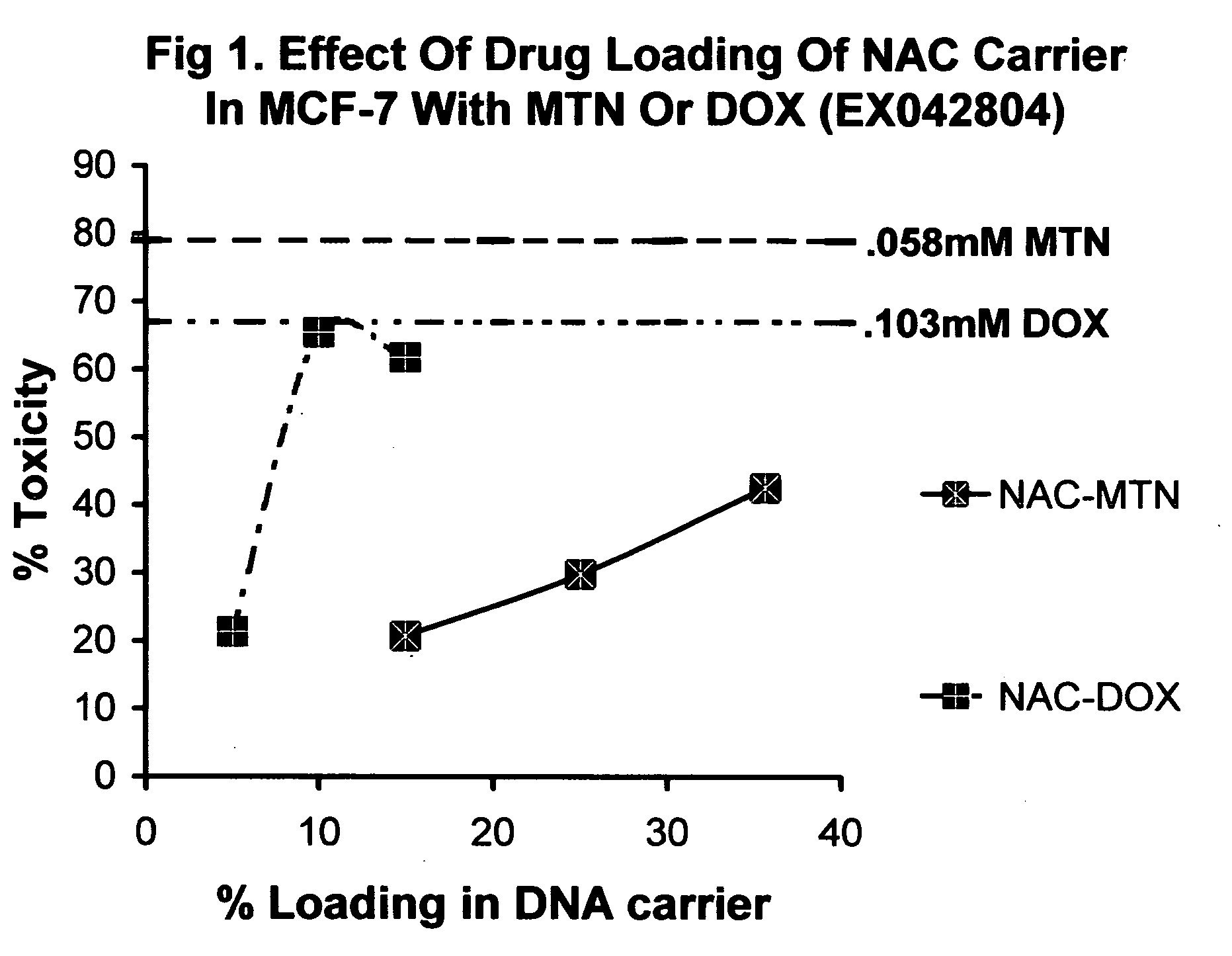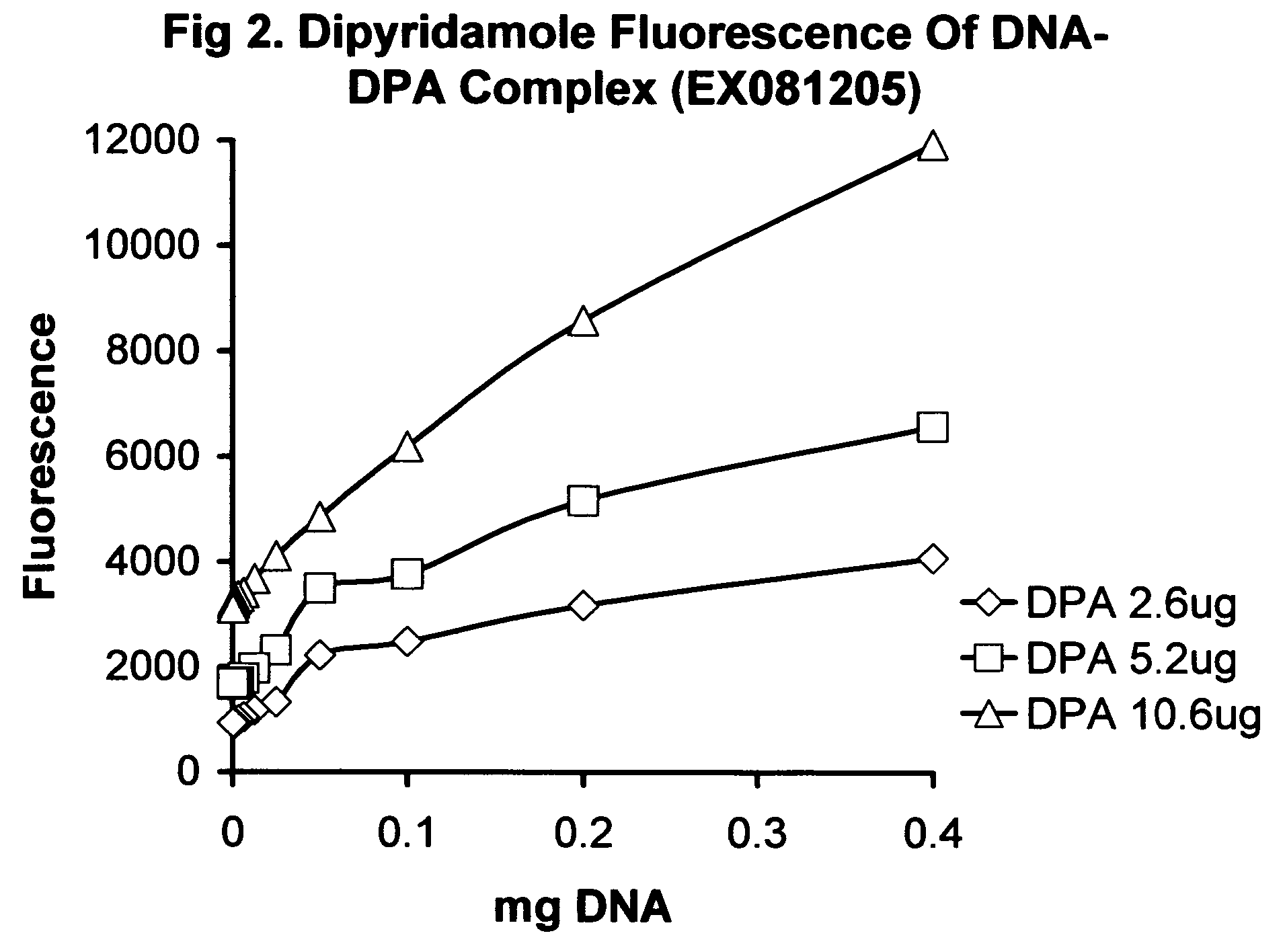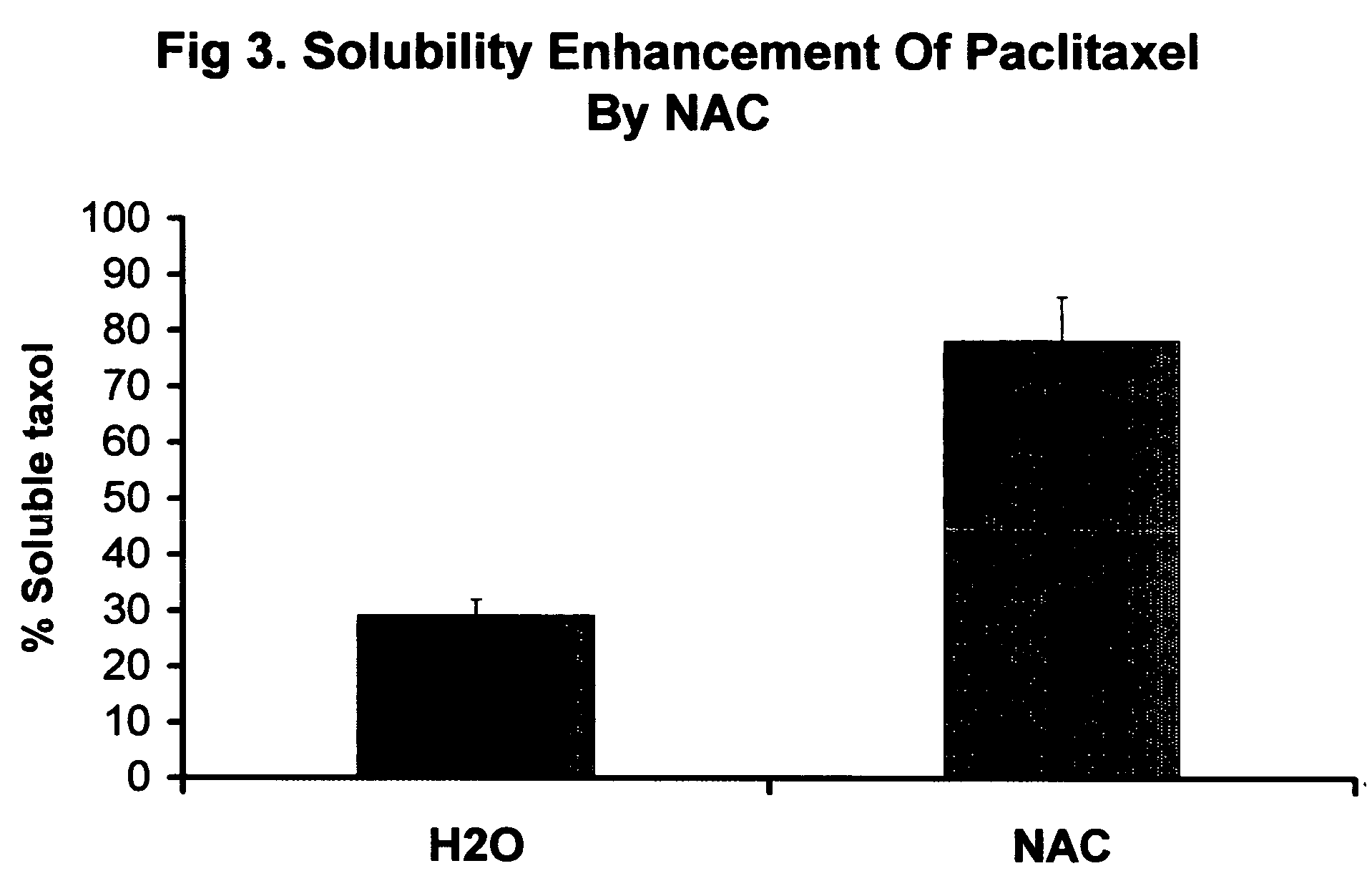Nucleic acid carriers for delivery of therapeutic agents
a technology of nucleic acid and therapeutic agents, applied in the field of nucleic acid carriers, can solve the problems of limited progress of nucleic acid in clinical applications, dose-limiting toxicity, pro-drug approaches have problems with release but also targeting, etc., and achieve low intracellular uptake, low biological effect on cells, and enhanced solubility
- Summary
- Abstract
- Description
- Claims
- Application Information
AI Technical Summary
Benefits of technology
Problems solved by technology
Method used
Image
Examples
example 1
[0197] Determination of drug loading limit of mitoxantrone (MTN) in a nucleic acid carrier (NAC) using a 2.5×9 cm G25 column (EX031904) and herring sperm DNA (HSDNA approx. range 10-100 bp Sigma-Aldrich). Eluent was 0.025M KP buffer pH 6.85 in 25% MEOH. Run#1 (10% drug loading) combined 0.968 mg MTN (0.1 ml stock) with 2 ml H2O. Added 10 mg (2×128 ml of 39.1 mg / ml) 318A HSDNA carrier. Eluted on column, a single band was observed eluting at 15-20 ml total volume. Collected 5 ml and checked absorbance scan of 0.2 ml sample on Synergy HT1. Run#2 0.484 mg MTN was dissolved in 2 ml and eluted on column. The MTN bound to the top of the gel bed. Run#3 (20% drug loading) 0.968 mg MTN with 2 ml H2O and 5 mg 318A carrier and elute on column. Peak was very concise, eluted between 16-20 ml. Collected 7.5 ml and read absorbance scan of 0.2 ml sample. Run#4 (30% loading) Combined 0.1ml 9.68 mg / ml MTN with 1 ml H2O, followed by 0.064 ml 39.1 mg / ml 318AHSDNA carrier, which formed a precipitate. Son...
example 2
[0198] Showing release of drug from the NAC carrier, using S100 column (EX051904) Column S100H.R. (high resolution S100, Pharmacia) 2.5×9 cm, eluent 25% MEOH, 25 mM KP pH6.85. Combined 9.5 mg 428A HSDNA with 0.47 mg MTN in 1 ml of eluent and eluted on gel. Most of the MTN was separated as a blue band that propagated very slowly. A DNA peak was detected by absorbance A260 at about 46 ml total elution, indicating that the DNA and MTN were separated by the column. Addition of 100 mg of a BCD-SBE 201A, to the column bound to the MTN band which caused rapid propagation and tightening of the MTN band due to complexing with the BCD-SBE201A (beta-cyclodextrin polymer). This example demonstrates the principal of release of drug from the NAC carrier.
example 3
[0199] Toxicity of NAC-MTN or NAC-DOX, at 50, 16.9, 5.6, and 1.9 ug / ml final drug concentration and 5.1 % drug loading in human MCF-7 cells. Sample A: 15 mg of HSDNA (EX031804A) was combined with 0.76 mg MTN(mw 517.4) or (sample B) 0.76 mg DOX (mw 579.99) to give 152 ug / ml final drug and 5.1% loading in 5 ml final vol. Samples C, D were MTN, or DOX only controls at equivalent final [drug] without HSDNA. Sample E was HSDNA, no drug and sample F was H2O only. MCF-7 cells were trypsinized and plated out previously. Triplicate samples were diluted 0.1 ml in 0.2 ml 1× media to give 3× fold serial dilution in 0.2 ml final. After 16 hour incubation the cells were visually inspected for signs of toxicity. Toxicity was scored as the following: 50%=one half all cells rounded, un-adhered or crenated.
TABLE 2Toxicity of NAC-MTN and NAC-DOX atfixed % w / w and varying [drug]Sample50 ug / ml17 ug / ml5.6 ug / ml1 .9 ug / mlAno tox.no tox.no tox.no tox.Bno tox.no tox.no tox.no tox.C100%100%90%20%D100% 80%2...
PUM
| Property | Measurement | Unit |
|---|---|---|
| Fraction | aaaaa | aaaaa |
| Fraction | aaaaa | aaaaa |
| Volume | aaaaa | aaaaa |
Abstract
Description
Claims
Application Information
 Login to View More
Login to View More - R&D
- Intellectual Property
- Life Sciences
- Materials
- Tech Scout
- Unparalleled Data Quality
- Higher Quality Content
- 60% Fewer Hallucinations
Browse by: Latest US Patents, China's latest patents, Technical Efficacy Thesaurus, Application Domain, Technology Topic, Popular Technical Reports.
© 2025 PatSnap. All rights reserved.Legal|Privacy policy|Modern Slavery Act Transparency Statement|Sitemap|About US| Contact US: help@patsnap.com



